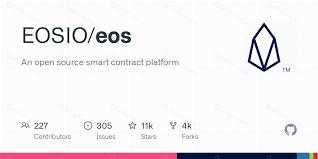EOS 简介
欢迎您和我一起踏上探索 EOS 的学习之旅,深入了解这个区块链世界中的创新平台。在这堂课中,我们将揭示 EOS 的技术层面和社区特性,让您看到它在区块链领域中的独特地位。
EOS 体现了区块链技术的演进,为去中心化应用程序 (dApp) 提供了一个强健且可扩展的平台。该平台由 Block.one 公司创立,由 Dan Larimer 和 Brendan Blu 等富有远见的人所领导。自 2017 年白皮书发布和创纪录的 ICO 以来,该平台取得了显著进展。EOS 是一个基于 EOSIO 软件构建的综合生态系统,犹如区块链的操作系统,为开发人员提供了使用各种编程语言创建 dApp 的灵活性。

EOS 的诞生
EOS 是 EOSIO 软件的产物,类似于专为区块链设计的操作系统,为开发者创建 dApp 提供无与伦比的各种编程语言的灵活性。从 2017 年 6 月持续到 2018 年的 ICO 预示着它的诞生,ICO 募集了超过 40 亿美元的资金。这一具有纪念意义的历史事件,凸显了社区对 EOS 彻底改变区块链领域愿景的信心。
领导层和关键人物
Dan Larimer 和 Brendan Blumer 是 EOS 项目的领军人物,他们为平台带来了丰富的经验和创新。Larimer 因其之前在 Bitshares 和 Steem 的工作而闻名,贡献了他区块链技术和去中心化系统方面的专业知识。Blumer 凭借其创业精神和敏锐的商业头脑,在塑造 EOS 的战略方向方面发挥了 关键作用。他们共同领导奠定了 EOS 发展和未来增长的基础。
争议和戏剧性事件
然而,ICO 后期充斥着争议,尤其是围绕 Block.one 如何利用筹集到的资金。批评者和 EOS 社区成员表示担忧,认为大量 ICO 资金并没有直接用于 EOS 生态系统的开发和增长。相反,指控表明 Block.one 将这些资金转移到其他项目和投资,这些项目和投资不一定与 EOS 区块链的进展或其利益相关者的利益一致。
最引人注目的争议点之一是 Block.one 在 ICO 后被认为缺乏对 EOS 网络的参与和投资。尽管 EOS 承诺成为 dApp 领先的平台,拥有可扩展的架构和每秒处理数千笔交易的能力。但批评者认为,Block.one 并没有达到预期,而且对EOS没有提供持续的支持和开发。
法律挑战与和解
Block.one 对 ICO 筹款和对 EOS 的承诺不仅引起了社区的批评,也引发了法律审查。2019 年 9 月,美国证券交易委员会 (SEC) 宣布与 Block.one 就未注册的 ICO 达成和解。Block.one 同意支付 2400 万美元的罚款(仅占 ICO 总募资的一小部分),但既未承认也未否认 SEC 的调查结果。该和解凸显了区块链项目面临的监管挑战和义务,并进一步引发了人们对 Block.one 对 EOS 生态系统的责任和承诺的质疑。
社区响应与去中心化努力
为应对这些挑战,EOS 社区已采取措施,进一步实现去中心化和自我治理。EOS 生态系统中的各个团体都启动了项目和治理结构,以减少对 Block.one 的依赖并确保平台的长期可持续性和成功。尽管存在挫折和争议,这些努力反映了社区的韧性和实现去中心化、可扩展的 dApp 平台愿景的承诺。
EOS 和 EOSIO:创新的基础

EOSIO 作为一个开源信标,倡导可扩展的 dApp 开发和智能合约。它优先考虑速度、可扩展性和易用性。其核心 - 权益证明委托制 (DPoS) 共识机制,不仅保护网络安全,还赋予 EOS 代币持有者通过投票选举区块生产商的治理角色。这种创新的共识机制,凸显了 EOS 对安全和社区驱动治理的承诺。
EOS 在所有区块链平台中独树一帜,拥有卓越的交易吞吐能力和创新的交易费用模式。用户只需抵押 EOS 代币,无需每次交易支付费用。这一系统加上人类可读的账户名称,大大提升了用户体验。EOS 网络基金会致力于促进生态系统增长,并积极应对中心化担忧问题和机器人活动等挑战,充分体现了 EOS 的适应性。

EOSIO 包括以下重要组件:
Nodeos:核心服务守护进程,负责区块生产、提供 API 端点以及促进本地开发。
Cleos:一个命令行的界面,允许通过 Nodeos 与区块链进行交互,并通过 Keosd 进行钱包管理。
Keosd:管理钱包中的 EOSIO 密钥并确保数字签名过程的安全。
这些组件协同工作,为构建可扩展的区块链解决方案提供了一个强大的环境。EOSIO 还提供了其他实用程序、版本转换升级指南和详细的发布说明,以支持开发人员的项目。在深入了解这些资源之前,建议先安装 EOSIO 软件,作为利用该平台功能的第一步。
奇思妙想和关键创新
- 资源分配模式: EOS 引入了一种新颖的资源分配模式,用户可通过质押代币获取带宽、存储和处理能力等网络资源,从而免去了交易费用。
- EOSIO Dawn 4.0: EOSIO Dawn 4.0 版本的发布带来了重大升级,包括改进 DPoS 共识算法和资源分配,展示了 EOS 对持续创新的承诺。
- 环境考量: 与传统的的工作量证明 (PoW) 系统相比,EOS 的 DPoS 机制不仅在共识方面高效,而且在环保方面也更具优势,从而降低了平台的碳足迹。
EOS 的远景之路: 更丰富
EOS的目标远超传统区块链的应用领域,希望无缝融入我们日常的数字互动中。这个宏大的愿景体现在它创建去中心化操作系统的雄心壮志上,这个想法有可能彻底改变区块链技术的可扩展性和易用性。通过推动大规模去中心化应用(dApp)的开发和部署,EOS 正在不断挑战区块链技术能够实现的界限,使其比以往任何时候都更易于访问和效率更高。
EOS 不仅专注于技术创新,也致力于构建一个更加包容和民主的数字生态系统,以成为Web3经济的重要支柱。他们设想一个未来,区块链技术不仅支持加密货币,也成为数字身份认证、投票系统到去中心化金融(DeFi)等多种服务的变革动力。EOS 重视让用户通过拥有和控制个人数据来增强自我赋权,他们的目标是创建一个安全、透明、有效率的数字经济,并让这些理想成为现实。
通过利用 EOSIO 平台的优势,包括其强大的共识机制和灵活的资源管理模型,EOS 能够独树一帜地应对当前区块链技术所面临的限制,例如用户体验和可扩展性挑战。这种前瞻性的方法加速了区块链技术的采用,使其成为数字生活中无缝的一部分,为改变行业和强化我们与数字世界交互方式的创新应用程序铺平了道路。
超越可扩展性:EOS 的商业吸引力
EOS 的架构堪称商业可扩展性设计的大师级范例。它融合了并行处理和异步通信等先进功能,以实现无与伦比的交易吞吐量。这种卓越的设计不仅展示了 EOSIO 处理海量交易量的能力,还展示了其适应不断变化的业务需求的灵活性,使其成为企业级区块链解决方案的理想平台。
EOS 的商业吸引力还体现在它能够促进跨行业区块链整合的新时代。在金融领域,EOSIO 可以彻底改变支付系统、资产管理和跨境交易,为传统金融基础设施提供安全高效的替代方案。在医疗保健领域,它为安全、不可更改的患者记录提供了潜力,在保护隐私的同时提高了数据的可访问性。同时,在供应链领域,EOS 的区块链可以引入透明度和可追溯性,减少欺诈和低效率。
EOS 生态系统中最突破性的发展之一是跨区块链通信 (IBC, Inter-Blockchain Communication) 的进步。这项技术将使基于 EOSIO 的区块链能够无缝交换信息和价值,打破当前存在于不同区块链网络之间的孤岛局限问题。IBC 不仅仅是一项技术上的成就,它也是迈向更加互联互通的区块链世界的关键一步。在这一环境中,去中心化应用的全部潜力都可以跨平台实现,而不会出现目前阻碍跨链互动的障碍。
此外,EOS对商业可扩展性的承诺和对环保可持续性的坚守紧密相连。它的DPoS共识机制不仅效率高、可扩展性强,而且相比其他区块链的耗能大的工作量证明(PoW)系统更为环保。这体现了EOS对区块链生态系统的广阔愿景。就是不仅要打造一个强大可扩展,同时还是一个负责任和可持续的平台。
通过其前瞻性的路径发展和商业吸引力,EOS 正在为区块链技术可以实现的新标准做出设定。让我们一瞥未来区块链成为我们数字世界的一个整体、高效和可持续的部分的景象。
EOS 的创新精神
从其创纪录的 ICO 到成为区块链创新的灯塔,EOS 的旅程才刚开始。凭借坚实的 EOSIO 软件基础和清晰的未来愿景,EOS 正准备重新定义数字领域。其独有的功能、对可持续发展的承诺和不断进化,使它成为一个令开发者、投资人和爱好者兴奋不已的平台。同时,也让人们看到了去中心化技术的未来。





